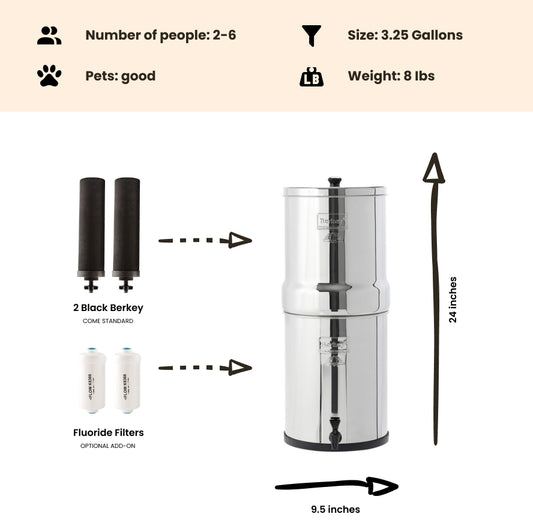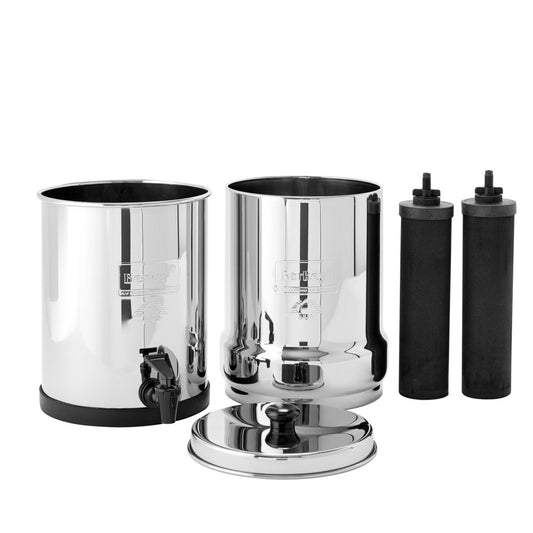
How Urban Grime Contributes to Water Pollution
By Dan DeBaunShare
City surfaces are often covered with a thin layer of urban grime consisting of heavy metals, soot, organic compounds and other pollutants. This complex mix of environmental pollutants can facilitate chemical reactions that can affect both water and air quality, and ultimately human health. A recent study conducted by a team of researchers who analyzed urban grime samples collected from two major US cities has found that the accumulated surface pollutants absorb sunlight. This means that the mix of pollutants could potentially also undergo photochemical reactions when exposed to the sun.
While there have been previous studies conducted on both lab-prepared urban grime as well as samples collected from urban areas, the exact composition of this material remains unclear, as well as how much it varies from location to location. What scientists do know, is that some constituents can react with other molecular components in the grime or the surrounding air, potentially affecting what chemicals or pollutants get released into the atmosphere and washed into freshwater sources with rainfall. In order to gain a clearer picture of how these processes contribute to atmospheric and water contamination, the authors took a closer look at the composition, physical attributes and light absorption properties of urban grime samples collected from Scranton, Pennsylvania, and Syracuse, New York.
For the study, which was recently published in the American Chemical Society's journal ACS Earth and Space Chemistry, the research team left a series of vertical quartz plates exposed to the elements in Syracuse for a period of 30 days. They then retrieved these plates and analyzed the urban grime that had accumulated on their surfaces. While it was previously believed that urban grime consisted of a film of pollutants, the urban grime samples collected from Syracuse revealed that the grime consisted of a conglomeration of particles as apposed to a uniform film, supporting the findings of more recent studies.

Effect of atmospheric pollution in France: one of the buildings was cleaned recently, but not the other
In a different set of experiments, the researchers scraped samples of grime off external window surfaces from buildings located in both Syracuse and Scranton and analyzed the chemical composition. When they compared their composition to samples collected from Canadian and European cities that had been analyzed in previous studies, they found that both sets of urban grime samples were similar in composition to samples analyzed from other cities, with some subtle but important differences. For example, urban grime samples collected from US cities had higher levels of chloride, possibly due to them using road salt during winter, while some European cities had higher levels of sulfate, probably due to burning of coal. The researchers also found that urban grime absorbed light at wavelengths equivalent to that of sunlight, suggesting that exposure to sunlight could enhance or inhibit chemical reactions that could potentially affect the quality of water and air in cities.
This grime continually comes in contact with rainwater which washes into our sewer system, which many times ends up in the ocean, rivers, and streams. As air pollution continues to be a problem, its important we monitor this grime and how it impacts our water supplies.
Journal Reference Corey R. Kroptavich, Shan Zhou, Shawn F. Kowal, Tara F. Kahan. Physical and Chemical Characterization of Urban Grime Sampled from Two Cities. ACS Earth and Space Chemistry, 2020; DOI: 10.1021/acsearthspacechem.0c00192-
Regular price $234.00 USDRegular priceUnit price / per
-
Regular price $327.00 USDRegular priceUnit price / per
-
Regular price From $367.00 USDRegular priceUnit price / per
-
Regular price From $408.00 USDRegular priceUnit price / per
-

 Sold outRegular price From $451.00 USDRegular priceUnit price / per
Sold outRegular price From $451.00 USDRegular priceUnit price / per -
Regular price From $478.00 USDRegular priceUnit price / per
-
Regular price $332.50 USDRegular priceUnit price / per
$350.00 USDSale price $332.50 USDSale

Dan DeBaun is the owner and operator of Big Berkey Water Filters. Prior to Berkey, Dan was an asset manager for a major telecommunications company. He graduated from Rutgers with an undergraduate degree in industrial engineering, followed by an MBA in finance from Rutgers as well. Dan enjoys biohacking, exercising, meditation, beach life, and spending time with family and friends.
~ The Owner of Big Berkey Water Filters
















